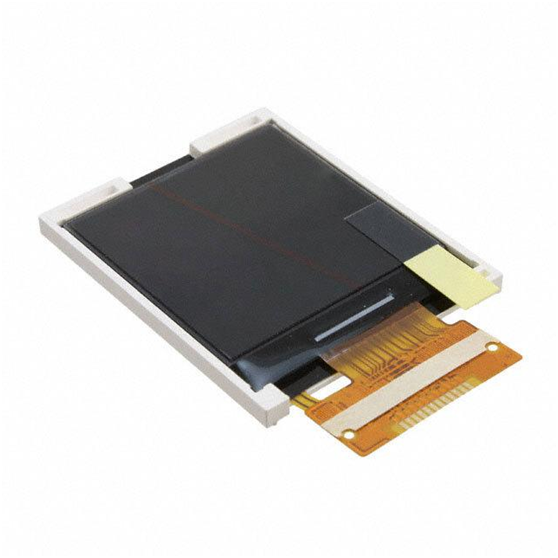OLED display full color and drive mode
Organic electroluminescent light flat panel displays can be divided into monochrome, colorful and full color. The color is mainly composed of several monochrome display areas, and each area is still monochrome. Full-color displays are still very difficult for current OLED technology.
The driving methods of OLEDs can be divided into passive matrix (PMMOS) and active matrix (AMOLED). Since the passive OLED architecture is relatively simple (active OLED architecture requires low-temperature polysilicon technology), and the production cost is relatively low, the commercialization step is faster (the development size is less than 5 inches), and the application product still accounts for the largest mobile phone at the beginning. proportion. However, the active OLED architecture has the potential advantages of low power consumption and high resolution. It can be developed in the future for large sizes (charges are faster in Poly-si TFTs, and it is easier to obtain consistent drivers. Dimensional panels are especially important) or products that emphasize performance gaps. In addition, for OLED, rectification is also very important. Each Pixel of the active OLED architecture is driven by a separate TFT circuit. Because the rectification is better than the passive OLED architecture, leakage is less likely to occur.
At present, in the OLED full-color display technology, there are three kinds of light color conversion method, color filter film method, and independent light-emitting material method. Because the OLED full-color display technology is still developing, the above three methods are not the final solution technology. . The Blue OLED With CCM array mainly uses blue light as the light source to convert the light color into red, green and blue light through the light color conversion film. Although the blue light emitting material does not need to manufacture the corresponding pixel pattern, the light color conversion The film needs to be made into a corresponding pixel pattern. The conversion rate of this method is an important key. The luminous efficiency of this method is better than that of the color filter film method, but it is not as good as the three-color independent luminescent material method. White OLED with color filter arrays is a white backlight source that achieves full color through a color filter like LCD. The biggest advantage of this full color method is that it can be directly applied to LCD. For color filters, the key to the technology lies in the purity of the white light source (which is also the biggest bottleneck at present) and the cost of the color filter film. TDK is the main participant.
The three-color independent luminescent material method (Blue & Green & Red EL) precisely applies three kinds of luminescent materials to the pixels, and the small-molecule luminescent materials are metal masks and polymer luminescent materials. This is a method using spin coating or inkjet printing. The companies that invest in this law include Pioneer, NEC, Sanyo, Toshiba, Universal Display, and Seiko-Epson. On the whole, the problem of this method is that the biggest bottleneck faced by small molecule luminescent materials lies in the purity and lifetime of red materials, while the polymer OLED has the problem of RGB positioning. In addition, mask has its size limitation, which is an important problem that must be solved in the future development of OLED size toward large-scale. In addition, in terms of fineness, this method is slightly inferior to the other two methods, but the luminous efficiency is superior, so it is still the mainstream method most commonly used by manufacturers.
If you want to know more, our website has product specifications for OLED, you can go to ALLICDATA ELECTRONICS LIMITED to get more information


